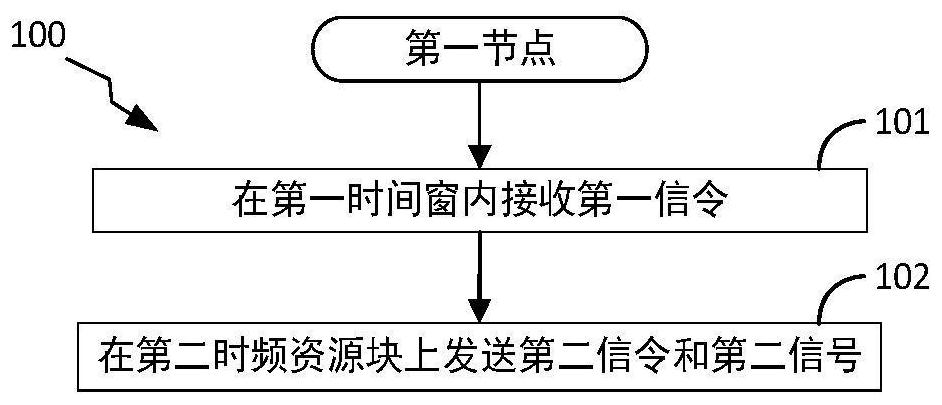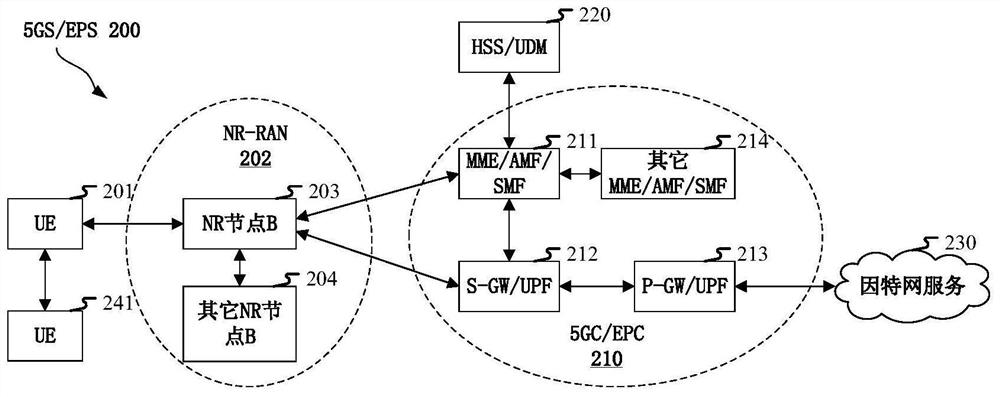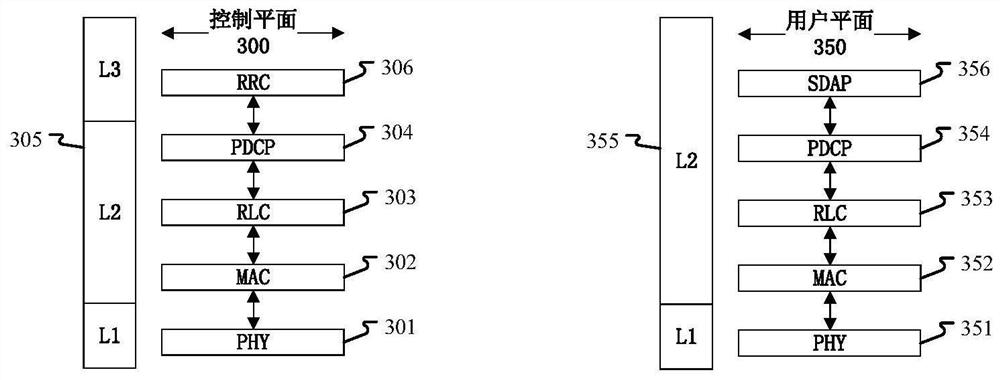Method and apparatus in node used for wireless communication
A wireless communication and node technology, applied in wireless communication, transmission path separation device, signaling distribution, etc., can solve problems that cannot fully support business requirements and work scenarios, reduce the probability of resource collision, reduce the target threshold, and improve The effect of the probability of exclusion
- Summary
- Abstract
- Description
- Claims
- Application Information
AI Technical Summary
Problems solved by technology
Method used
Image
Examples
Embodiment 1
[0086] Embodiment 1 illustrates the processing flowchart of the first node of an embodiment of the present application, as shown in the attached figure 1 shown. in the attached figure 1 In , each box represents a step.
[0087] In Embodiment 1, the first node in this application first executes step 101 to receive the first signaling within the first time window; then executes step 102 to send the second signaling and the first signaling on the second time-frequency resource block Two signals; the first signaling includes a first priority and a first identifier, the first signaling indicates a first time-frequency resource block, and the first time-frequency resource block is a resource block within the first time window A time-frequency resource block of the first type; the second signaling includes a second priority and a second identifier, and the second signaling indicates the second time-frequency resource block; the first bit block is used to generate the said second s...
Embodiment 2
[0242] Embodiment 2 illustrates a schematic diagram of a network architecture according to the present application, as attached figure 2 shown. attached figure 2A diagram illustrating a network architecture 200 of 5G NR, LTE (Long-Term Evolution, long-term evolution) and LTE-A (Long-Term Evolution Advanced, enhanced long-term evolution) systems. The 5G NR or LTE network architecture 200 may be referred to as 5GS (5G System) / EPS (Evolved Packet System, Evolved Packet System) 200 or some other suitable terminology. 5GS / EPS 200 may include one or more UEs (User Equipment, user equipment) 201, a UE241 performing sidelink communication with UE201, NG-RAN (Next Generation Radio Access Network) 202, 5GC (5G Core Network, 5G Core Network) / EPC (Evolved Packet Core, Evolved Packet Core) 210, HSS (Home Subscriber Server, Home Subscriber Server) / UDM (Unified Data Management, Unified Data Management) 220 and Internet Service 230. 5GS / The EPS may be interconnected with other access ne...
Embodiment 3
[0262] Embodiment 3 shows a schematic diagram of an embodiment of a wireless protocol architecture of a user plane and a control plane according to the present application, as shown in the attached image 3 shown. image 3 is a schematic diagram illustrating an embodiment of a radio protocol architecture for a user plane 350 and a control plane 300, image 3 Shown in three layers for the first node device (RSU in UE or V2X, vehicular device or vehicular communication module) and the second node device (gNB, RSU in UE or V2X, vehicular device or vehicular communication module), or Radio protocol architecture of the control plane 300 between two UEs: Layer 1, Layer 2 and Layer 3. Layer 1 (L1 layer) is the lowest layer and implements various PHY (Physical Layer) signal processing functions. The L1 layer will be referred to herein as PHY 301 . A layer 2 (L2 layer) 305 is above the PHY 301, through which the PHY 301 is responsible for the link between the first node device and t...
PUM
 Login to View More
Login to View More Abstract
Description
Claims
Application Information
 Login to View More
Login to View More - R&D
- Intellectual Property
- Life Sciences
- Materials
- Tech Scout
- Unparalleled Data Quality
- Higher Quality Content
- 60% Fewer Hallucinations
Browse by: Latest US Patents, China's latest patents, Technical Efficacy Thesaurus, Application Domain, Technology Topic, Popular Technical Reports.
© 2025 PatSnap. All rights reserved.Legal|Privacy policy|Modern Slavery Act Transparency Statement|Sitemap|About US| Contact US: help@patsnap.com



